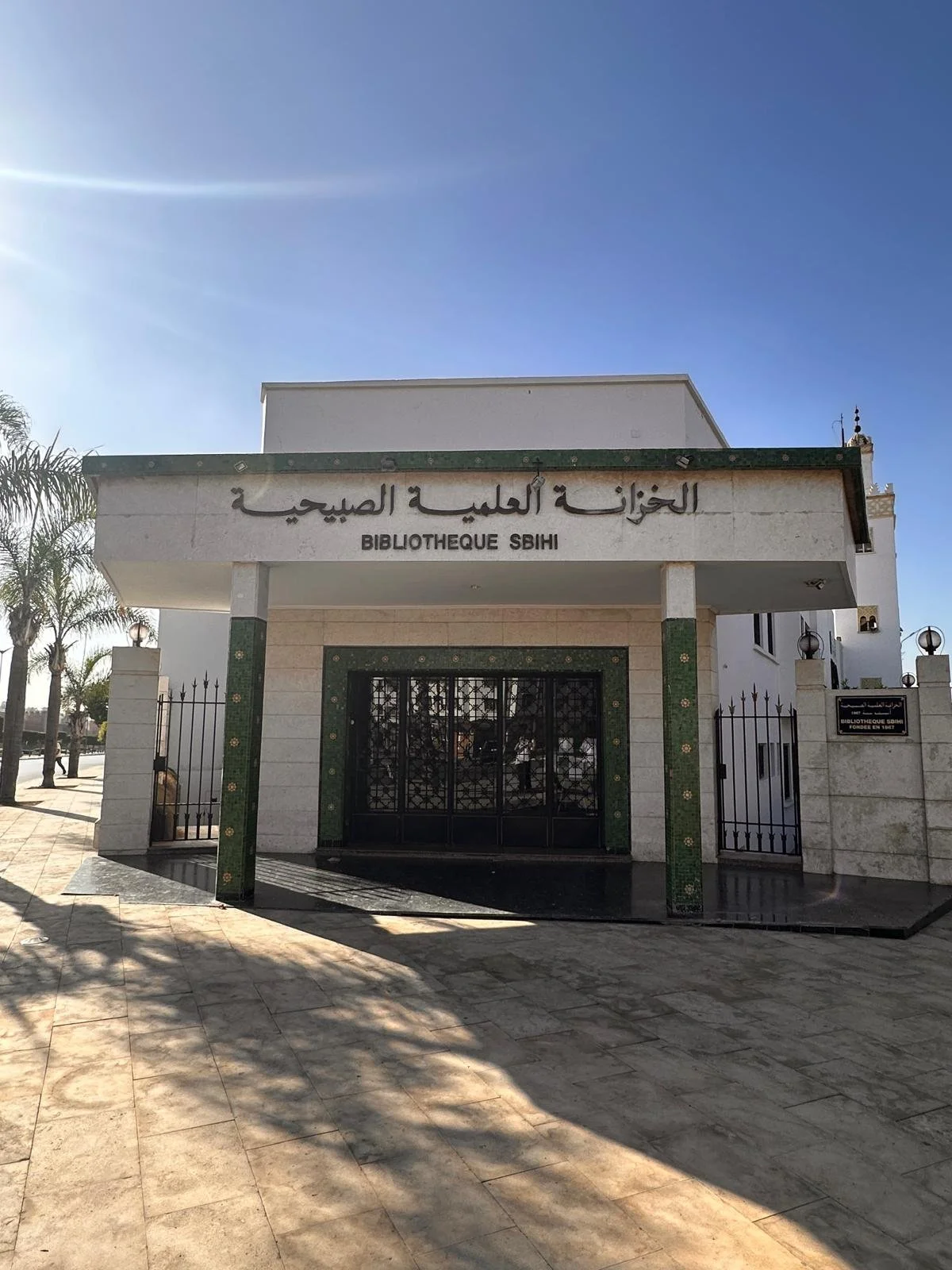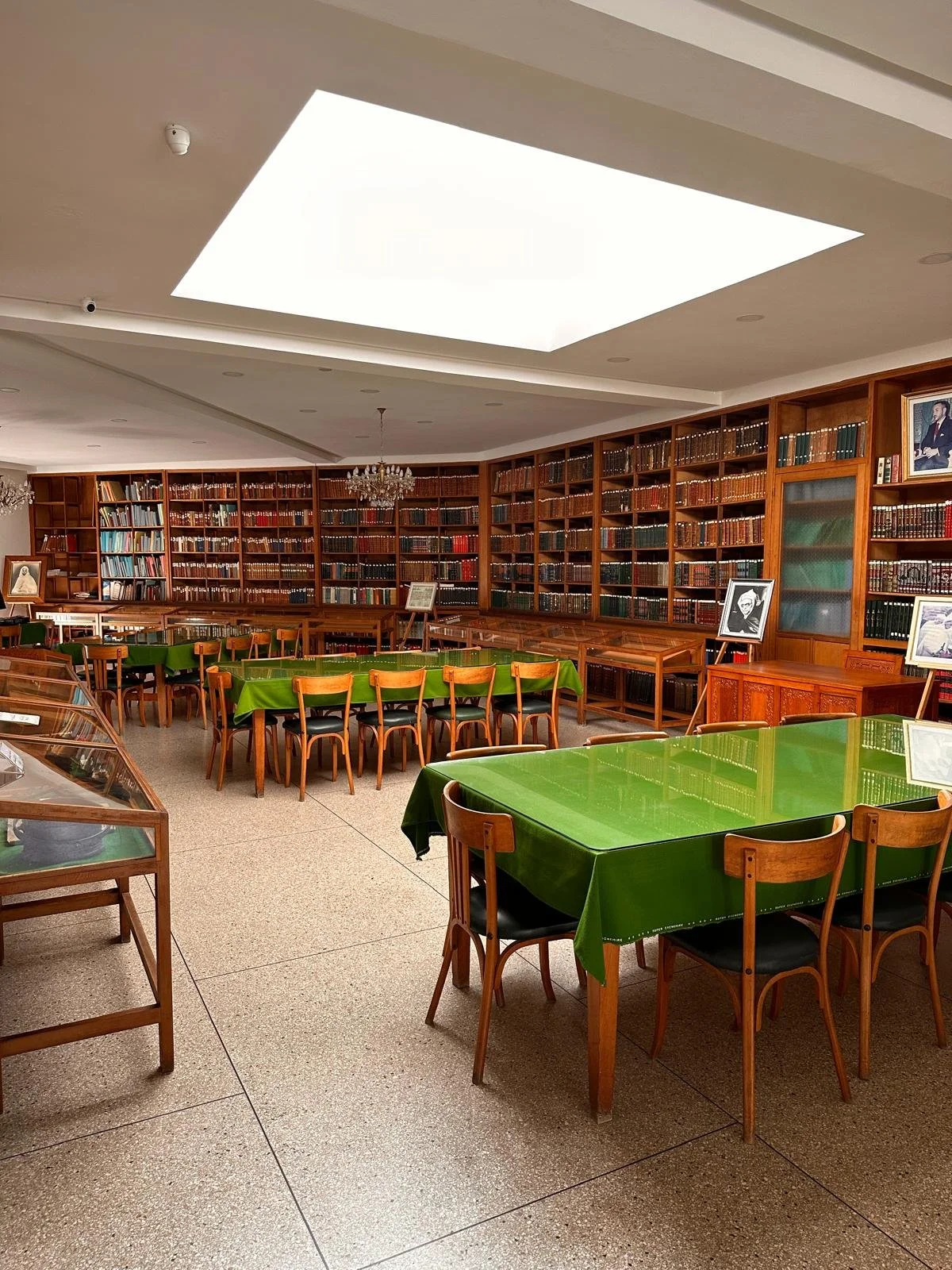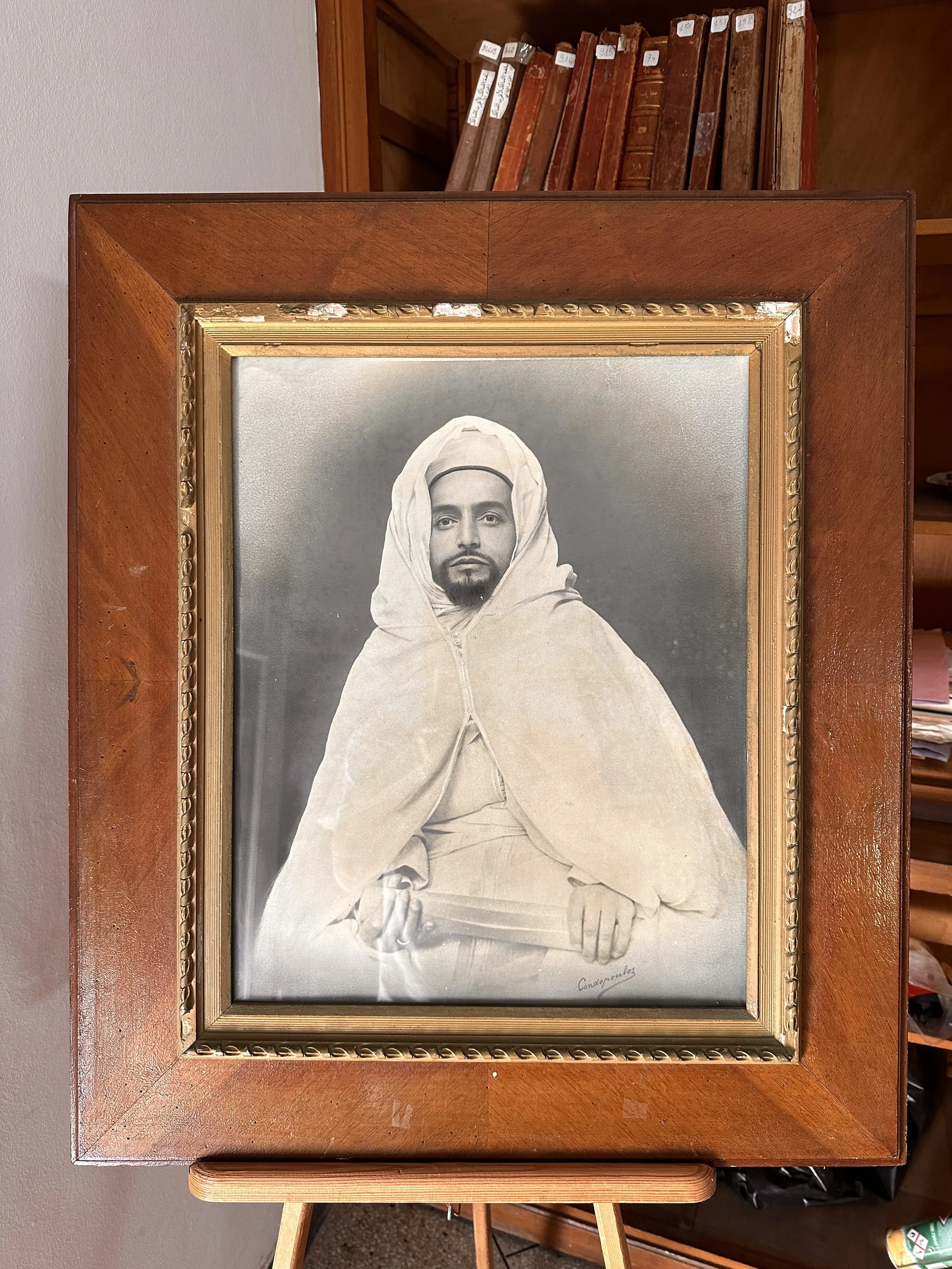The Sbihi Library
Written by Mathias Ghyoot and Athina Pfeiffer (2025)
INtroduction
The Sbihi Library is a privately owned library holding the collection of the Sbihi family, a prominent scholarly family of 20th century Morocco. Founded in 1967, the library is located in Salé, just outside Rabat. It holds a collection of books, periodicals, private archives, and manuscripts in both Arabic and French, but is also a small museum showcasing navigation instruments, decorations, and maps mirroring the interests of the Sbihis and the local history of Salé.
The library is open Tuesday through Saturday from 9am to 4pm and on Mondays from 9am to 6pm.
Location: Google Maps
GOING THERE
To go to the Sbihi Library, grab either a petit taxi to Place Chohadaa in Salé, or alternatively, take the tram to the Bab Lamrissa Station, and walk 10 min. up Avenue de la Résistance. There are also several public parking spots available around Place Chohadaa.
GETTING IN
Although the library may look gated and closed, worry not: merely ring the door bell on the left side of the main gate after which one of the staff members will let you in. You’re free to bring in your bags. Head either upstairs or downstairs to one of the two librarians, who will greet you and help register you for a library card. There is no fee involved, but please do remember to bring a copy of your passport, proof of affiliation, and a passport photo. You’ll be asked to fill out a form, detailing your personal information, research interests, and university affiliation. The library card is valid for one year, and you will need it to request material.
Finding your material
Manuscripts and Archives
Ask one of the librarians to provide you with the physical catalog of the library’s manuscript collection, which as of this date is not yet available online. The catalog is organized thematically and covers a wide range of topics (from law and theology to literature and astronomy). The collection reflects the interests of the Sbihis. You may also encounter entries describing Xerox copies of manuscripts that are not held in the library, but are usually reproductions of manuscripts held elsewhere in Morocco.
As for archives, please refer to one of the librarians who will assist you with an overview of the collection.
Books and Periodicals
Ask one of the librarians to help set you up at the computer in the basement. Here, you’ll find an internal, searchable catalog in French and Arabic. Feel free to search the catalog by title and author, but beware that most of the entries do not contain information on publication date, place of publication, or printing press. On a piece of paper, note the shelfmarks and titles of the material you wish to request.
Also note that the library has an older card catalog system in the basement that may offer more details on the collection, e.g., titles of specific articles in periodicals held by the library. The card system is alphabetically organized by author in Arabic. Please do ask the librarians before you venture into the card index.
Ordering your material
Manuscripts and Archives
Once you’ve look at the catalog, approach one of the librarians for a request form. Here, you’ll need to indicate the shelfmark, title, and author of the manuscript. You'll also be asked to handwrite a letter in Arabic to the head librarian (muhafiz) of the manuscript division, explaining your interest in the manuscript(s). Once you’ve written the letter, hand it over, alongside the form, to one of the librarians. Make sure that they have your correct email address or phone number (no WhatsApp), as they will be in contact with you once the head librarian has approved your request. You’ll then be able to view digital images of the manuscripts or the manuscripts themselves.
We’ve been told that the same process applies to the archive collection of the Sbihi Library.
Books and Periodicals
Once you’ve noted your shelfmarks and titles, hand your piece of paper to one of the librarians who will then fetch your material for you in the stacks. You are then free to look at your material at one of the many desks lining the readings rooms in both the basement on the first floor. Do note that the stacks, although visible in the reading rooms, are off-limits to users.
Ordering scans
Manuscripts and Archives
The library is currently in the process of digitizing its manuscript collection. If you wish to obtain digital copies of a manuscript, you’ll need the approval of the head librarian of the manuscript division. Be prepared to write a letter to that effect.
Books and Periodicals
There is no official policy on reproductions. During our visit, we were able to use our phones to scan printed material. However, in case of doubt, reach out to one of the librarians.
Food and well-being
There is no cafeteria within the library, but you are free to bring water. There are several cafes and restaurants in the neighborhood, including around the Firdaous Garden.
The Sbihi Library
The reading room on the first floor of the Sbihi Library
Catalog of manuscripts at the Sbihi Library
The main patron of the Sbihi family




